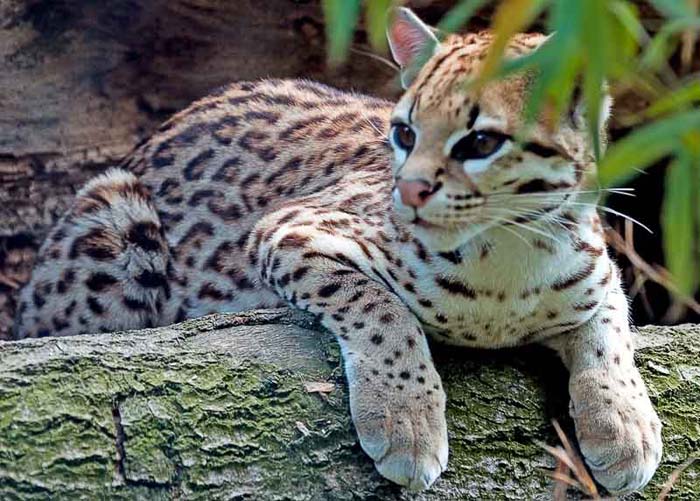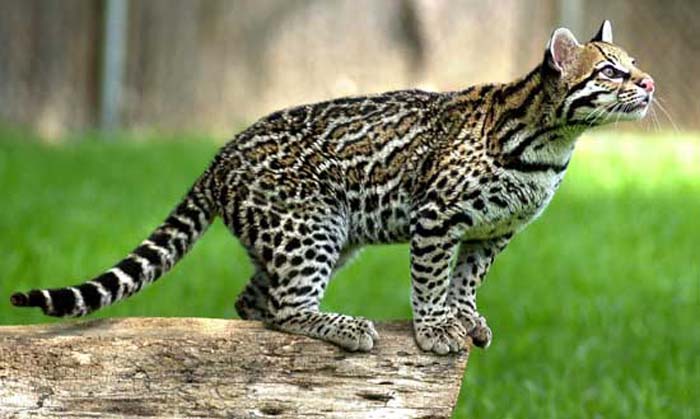Ocelot Facts – The Exotic Cat That Is Now Endangered
Posted in Wildlife A-Z | January 11, 2011 | Comment NowThe ocelot is ideally twice the size of the average house cat. It is a sleek animal and the most identifiable characteristic has to be its dappled coat, which is best described as ‘gorgeous’. These nocturnal cats are known to use their keen hearing capabilities and sight so as to hunt down their prey. They ideally hunt on rodents, rabbits, iguanas, frogs and fish. They also generally take to the trees; and this is what adds the stalking of birds and monkeys to their list. Unlike most cats who will avoid water, one of the most interesting and distinguishing of the ocelot facts is that they are indeed good swimmers.
Ocelot Facts –
Location:
Ocelots are generally found in Central and South America, Texas and other states of United States and in Mexico. You will generally see them in grassy lands are rainforests alike.
Measure:
They are generally known to measure up to about 2.5 – 3 feet (36 inches) in length. They will generally weight up to about 22 pounds. The front paws of this exotic wild cat are comparatively and noticeably larger than its hind paws. Among all of the feline family members, this creature has the lowest resting body temperature.
Physical Features:
The coat of the ocelot will generally be grayish, cream or even reddish-brown colored, and the coat will be covered with differing patterns of black rosettes, spots, stripes or bands. The black bands are characteristically seen on the tail.
The most distinguishing, perhaps, of all ocelot facts or characteristics is the existence of the two black lines on either side of their face, which is a similar trait as that seen in the leopard. The single white spots (ocelli) that are located on the back of their ears are said to help them in intercommunicating with each other.
Hunting:
The ocelots may be adapted to eating meat, but they don’t chew their meat. They have fang like pointed teeth which can be used to deliver that fatal bite to the prey. They then use the sharp razor-like teeth at the back of their set to tear the food. They will shred the prey to pieces and then swallow the pieces whole. The raspy tongue helps in cleaning every bone clean of any possible meat.
Endangered Species:
The gorgeous dappled fur coat made the ocelots an easy target for a number of poachers and hunters. This is one major contributing reason to why they became endangered species. They are protected species in almost all the regions where they are found now.
Another reason was that although the females were capable of giving birth to a litter of two to three kittens, in these days most of them were seen giving only single kitten litters. This had added to the woes of animal conservation activists.





 Save to delicious
Save to delicious Stumble it
Stumble it